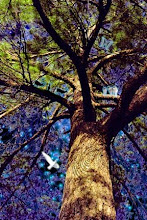Letter to the Editor - issue of Cherokee rolls is Cherokee business My name is Gayle Ross and I am an enrolled member of the Cherokee Nation. I want to respond to the remarks made by Marilyn Vann, but first I want to thank you for the opportunity to speak and to thank those who take the time to listen. Gayle Ross |
|
Sunday, November 11, 2007
The Cherokees were raising corn as early as 1,000 BC. Before European contact the Cherokees already participated in a ceremony giving thanks for crops and it was a form of worship in what is known as the "Green Corn Dance". This traditional dance was a very important ceremony for the Cherokees. This ceremony was the beginning of the New Year. Our ancestors gave thanks for the corn crop that they saw as a continued life for them. It was a time for forgiveness and grudges to be left behind - starting anew. A part of their celebration was fasting, then gathering at the ceremonial grounds to play stickball, dance and have a big feast.
Other traditions for the Cherokee included participating in sports mainly the stickball game and marble game; eating bean bread, wild game, and wild plants to mention a few; and for communication they used the wampum belts.
As settlers moved inland, Native Americans they encountered, including the Cherokee assisted the early settlers and traders with food and supplies. This was a continual process not just a single meal. The Cherokees also taught the early settlers how to hunt, fish, and farm in their new environment. They also taught them how to use herbal medicine when they became ill.
Sadly, as more English people came to America, they didn't need the Native Americans help anymore and the newcomers had forgotten how the natives helped the earlier Pilgrims. Mistrust began to grow and the friendship weakened. The Pilgrims started telling their Native neighbors that their native religion and native customs were wrong. The relationships deteriorated and within a few years the children of the people who ate together at the first Thanksgiving were killing one another in what led to the King Phillip's War.
In 1736, Christian Priber, a Frenchman, established himself among the Cherokees, learned their language, and taught them the European Christianity until he was arrested by the English and put in prison at Charleston, South Carolina. Even though the Cherokees worshipped in their own religion, the work of the missionaries converted some Cherokees to the European Christianity. The first known Cherokee converted to European Christianity was 1773. In 1801, the first permanent Christian Mission in the Cherokee Nation was called Moravian Mission. It was located at Springplace, which is in present-day Georgia. As more Cherokees became Christians the custom of observing the English National Thanksgiving Holiday became common.
D. W. Bushyhead, Principal Chief of the Cherokee Nation, signed a proclamation on Thursday, November 26th, A. D. 1885 for Thanksgiving to be practiced by the Cherokees. The Proclamation reads, "The Cherokees have abundant reason to rejoice. They are favored in all things that should make a Nation prosperous and a people happy. They have an indisputable right to an area of land sufficient for the needs of generations of Cherokees to come. They have a perfect form of Government, wise laws, unsurpassed educational facilities for their children and money enough of their own invested to make these blessings permanent. It is true this Nation is neither numerous wealthy nor powerful compared with many others, but it stands and relies upon the plighted faith of a Nation that has become the strongest on earth by reason of its respect for human rights.
Today the major population of the Cherokee members celebrates the National Thanksgiving Holiday. There are a few Cherokees and other Native Americans who still celebrate the Green Corn Ceremony in July and the National Thanksgiving Holiday in November.
Information by Peoples Path





